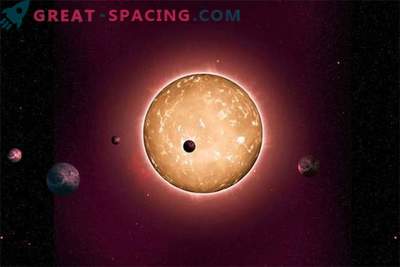
Astronomers have come up with a new and improved method for measuring the massiveness of millions of single stars, especially if they have planetary systems. Knowledge of the exact stellar mass not only helps to better understand the process of birth, development and death of objects, but also to assess the true nature of thousands of exoplanets.
The method was specially devised for the Gaia mission (ESA), which creates the Milky Way map in three dimensions, as well as the future satellite to search for TESS exoplanets, which will be launched in 2018. Scientists now use the full light from the star and its parallax to determine the diameter. Next, the flickering of starlight is analyzed, which indicates a measure of surface gravity. Combining this information allows you to get the stellar mass.
The accuracy of the method was demonstrated on 675 stars with already known mass. Traditionally, the method of measuring the orbits of binary stellar systems. Newton's laws of motion allow us to calculate the massiveness of both components. But the problem is that less than half of the star systems are represented by single objects (1/5 of the red dwarfs where alien worlds can be located). The most common method is photometric. It classifies stars by color and brightness, but it lacks accuracy. Asteroseismology calculates the light oscillations caused by sound pulses passing through the inner stellar composition. There is more accuracy here, but you can only apply it to a few thousand of the brightest objects.
The new method achieves an accuracy of 10-25% (the largest for today) and allows you to engage in single stars. It all started with special data visualization software. Next, we connected an empirical method for determining the diameter using published information in star catalogs. The methods combined and obtained a new formula.
Establishing the mass of a star with a planetary system is a major factor in calculating the massiveness and size of the planets. A 100% error in the calculation of the massiveness of the star (with the photometric approach) will result in a 67% error in the calculation of the planetary mass. This equates to a difference between Earth and Mercury.











































